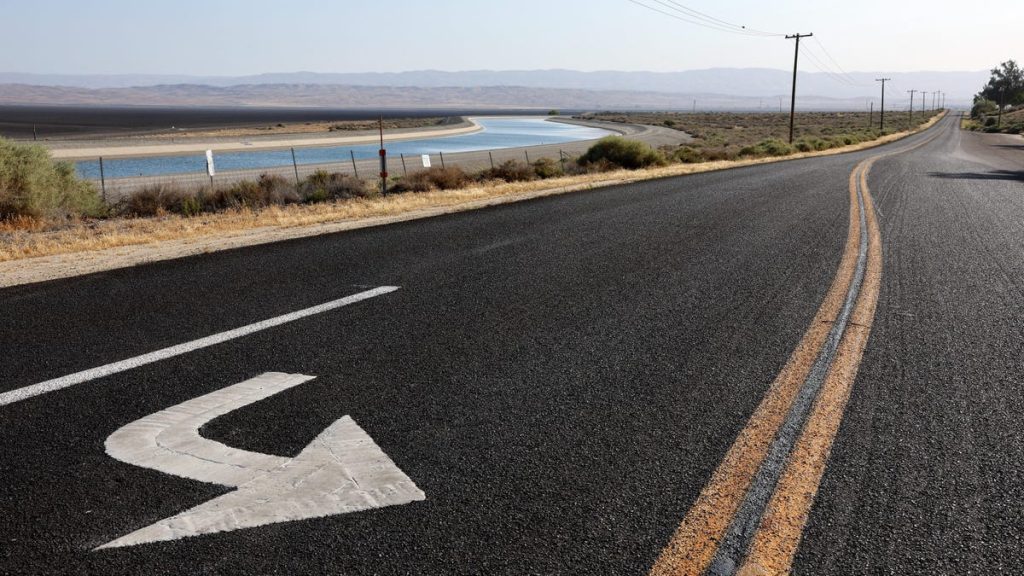California's Drought Is Making Everything Less Green, Including EVs

Water flows through the California Aqueduct (top L), which moves water from northern California to the state’s drier south, in Kern County on May 4, 2022 in Taft, California. A water shortage emergency has been declared in Southern California with water restrictions beginning June 1st for 6 million residents amid drought conditions. Photo: Photo by Mario Tama (Getty Images)
An electric vehicle is only as green as its power grid, and California’s grid right now is about as green as its parched landscape. A new report from the federal U.S. Energy Information Administration shows three years of drought have sapped hydroelectric options, causing California to turn to dirtier sources of power.
The state relies on winter snowpack up in the mountains to serve much of its water needs. As of April 1, considered peak snowpack season, snow was just 26 percent of what it is in a typical year. On that same date, California’s two largest reservoirs, Lake Shasta and Lake Oroville, were 48 percent and 67 percent of historical average storage, respectively.
California is normally able to generate about 15 percent of its power via hydroelectric damns, but the drought ravaging the state since October of 2020 has cut that in half, an that power has to come from somewhere—mostly natural gas and other dirty forms of power. The switch will result in a 6 percent increase in energy-related carbon dioxide emissions in the state, according to the feds:
To offset the reduction in hydroelectric generation, California purchases more electricity from neighboring markets and increases in-state natural gas generation, which rises from 45% in the Median case to 50% of total summer generation mix in the Drought case. In the Drought case, increased natural gas generation contributed to higher modeled wholesale electricity prices, as well as an increase in CO2 emissions.
That means charging electric cars just got dirtier too. Which is unfortunate because Californians love their EVs. It just became the first state to reach 1 million EVs, with electric vehicles making up over 12 percent of auto sales in 2021, according to the International Energy Agency.
Just like most of the country, California will need major updates to its grid to handle all of these EVs in a clean and sustainable manner. While officials are already preparing for a summer of extreme heat causing power blackouts in the Golden State, the state has been proactive in cleaning up its grid. California increased its reliance on solar and wind energy while retiring over half of its steam turbine natural gas units over the last seven years. On April 3 the state managed to produce 97 percent of its power needs from renewable resources.
At least they’re getting a head start, while the rest of the country races to catch up. Most of middle America remains an EV charging desert, but a recently announced $5 billion-plan to build a nationwide charging station system could soon change all that.



